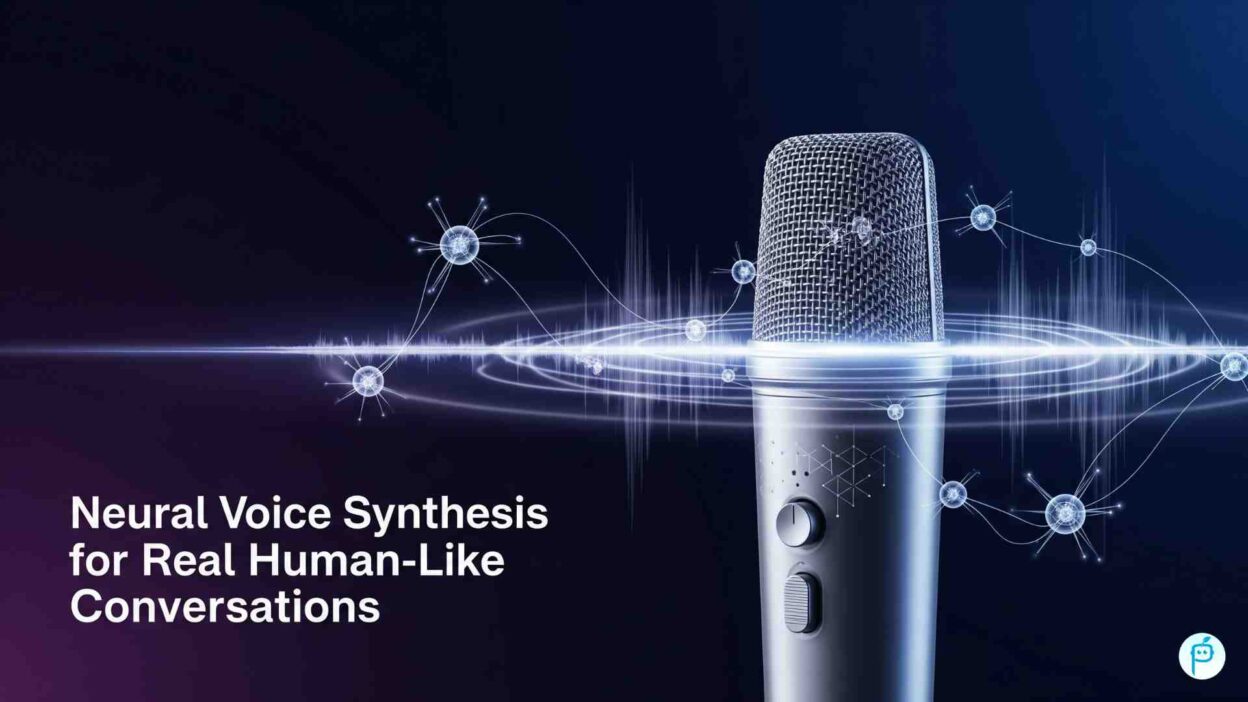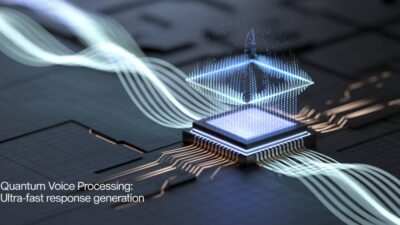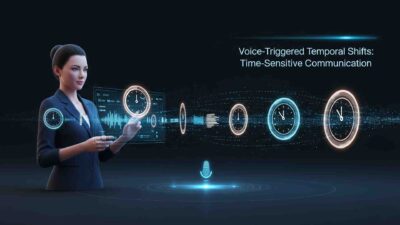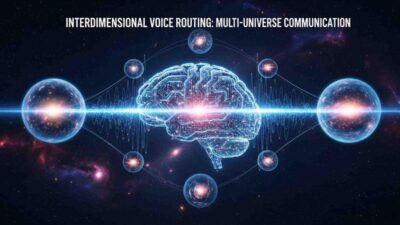Neural voice synthesis represents the cutting edge of artificial intelligence technology. This revolutionary system transforms text into speech that sounds remarkably human. Modern businesses are embracing this technology to enhance customer experiences. Content creators use neural voice synthesis to produce engaging audio content. The technology has evolved beyond basic text-to-speech systems.
Table of Contents
What is Neural Voice Synthesis Technology?
Neural voice synthesis uses deep learning algorithms to create human-like speech. The system analyzes patterns in human vocal data. Machine learning models train on thousands of hours of recorded speech. These models learn the nuances of human pronunciation. The technology captures emotional tones and speaking styles.
Traditional text-to-speech systems sound robotic and unnatural. Neural voice synthesis produces fluid, natural-sounding speech. The technology mimics human breathing patterns. It replicates the subtle variations in human speech. Voice inflections sound authentic and engaging.
How Neural Networks Process Voice Data
Neural networks process voice data through complex mathematical operations. The system breaks down audio into small segments. Each segment gets analyzed for pitch, tone, and rhythm. The network identifies patterns across different speakers. These patterns help create consistent voice models.
Deep learning algorithms use multiple layers of processing. Each layer extracts different features from the audio data. Lower layers focus on basic sound properties. Higher layers capture complex linguistic patterns. The system combines these layers to generate realistic speech.
The Science Behind Voice Cloning
Voice cloning technology replicates specific vocal characteristics. The system needs only minutes of sample audio. Neural networks analyze the unique features of each voice. These features include vocal tract shape and speaking habits. The technology creates a digital voice model.
Machine learning algorithms identify speaker-specific patterns. The system learns how individuals pronounce different sounds. It captures personal speaking rhythms and cadences. Voice cloning can reproduce accents and speech impediments. The technology maintains consistency across different texts.
Benefits of Neural Voice Synthesis for Businesses
Companies use neural voice synthesis to reduce production costs. Voice actors charge significant fees for recording sessions. The technology eliminates the need for studio time. Businesses can generate unlimited audio content instantly. This saves both time and money.
Customer service departments benefit from consistent voice quality. Human agents have different speaking styles and energy levels. Neural voice synthesis maintains uniform quality standards. The technology works 24/7 without fatigue or mood changes. Customers receive consistent service experiences.
Scalability and Efficiency Advantages
Neural voice synthesis scales effortlessly across projects. Companies can generate content in multiple languages simultaneously. The technology adapts to different regional accents. Businesses can create personalized messages for individual customers. Mass customization becomes economically viable.
Content production timelines shrink dramatically with this technology. Traditional voice recording requires scheduling and coordination. Neural voice synthesis generates audio files instantly. Companies can update content without re-recording sessions. This flexibility accelerates product development cycles.
Cost-Effectiveness in Content Creation
The technology reduces long-term content creation expenses. Initial setup costs are quickly recovered through savings. Companies eliminate ongoing voice talent fees. Studio rental expenses become unnecessary. The technology provides unlimited usage without additional costs.
Marketing teams can test multiple voice variations quickly. A/B testing becomes simple and affordable. Companies can optimize their audio content continuously. The technology enables rapid iteration and improvement. This leads to better engagement and conversion rates.
Popular Applications of Neural Voice Synthesis
Audiobook production has transformed through neural voice synthesis. Publishers can create books in multiple languages rapidly. The technology maintains consistent narration quality throughout long texts. Independent authors gain access to professional-quality narration. This democratizes audiobook creation across the industry.
E-learning platforms integrate voice synthesis for course content. Students receive consistent instruction delivery. The technology can adapt to different learning styles. Educators can create engaging multimedia experiences. Language learning applications benefit from authentic pronunciation examples.
Entertainment Industry Applications
Video game developers use neural voice synthesis for character voices. The technology creates diverse character personalities efficiently. Games can feature dynamic dialogue systems. Players receive personalized responses based on their actions. This enhances immersion and replay value.
Animation studios adopt the technology for character development. Voice synthesis enables rapid prototyping of character voices. Studios can experiment with different vocal styles quickly. The technology reduces production timelines significantly. This allows for more creative experimentation.
Healthcare and Accessibility Uses
Medical applications include patient education and therapy. Neural voice synthesis creates personalized treatment instructions. Patients receive clear, consistent medical information. The technology helps overcome language barriers in healthcare. Medical professionals can deliver standardized care instructions.
Accessibility applications help individuals with speech disabilities. The technology can restore lost voices through personal models. Users maintain their unique vocal identity. Communication devices become more natural and expressive. This improves quality of life for affected individuals.
Technical Requirements and Implementation
Neural voice synthesis requires substantial computational resources. Graphics processing units accelerate the training process. Cloud computing platforms provide scalable infrastructure. Companies can access the technology without hardware investments. This makes advanced voice synthesis accessible to smaller businesses.
Data quality significantly impacts synthesis results. High-quality audio samples produce better voice models. Background noise and poor recording conditions affect output quality. Professional recording equipment improves training data. Clean audio samples lead to more realistic synthetic voices.
Software and Platform Options
Multiple software platforms offer neural voice synthesis capabilities. Cloud-based services provide easy integration options. Companies can access the technology through APIs. On-premise solutions offer greater control and security. The choice depends on specific business requirements.
Open-source frameworks enable custom development projects. Developers can modify algorithms for specific needs. Commercial platforms offer user-friendly interfaces. These solutions require less technical expertise. The technology becomes accessible to non-technical users.
Integration with Existing Systems
Neural voice synthesis integrates with content management systems. Companies can automate audio content generation. The technology works with existing workflow tools. Integration reduces manual processes and errors. This streamlines content production pipelines.
API connections enable real-time voice generation. Applications can create speech dynamically. The technology responds to user inputs instantly. This enables interactive voice applications. Customer service systems benefit from real-time capabilities.
Future Developments in Voice Technology
Emotional intelligence will enhance neural voice synthesis capabilities. Future systems will detect and respond to emotional contexts. The technology will adapt tone and style automatically. This creates more engaging and appropriate responses. Conversations will feel more natural and human-like.
Multilingual capabilities are expanding rapidly. Systems will switch between languages seamlessly. The technology will maintain consistent speaker identity across languages. This enables global communication applications. Businesses can reach diverse audiences effectively.
Emerging Trends and Innovations
Real-time voice conversion will transform communication. People will speak in different voices instantly. The technology will enable voice privacy protection. Users can maintain anonymity while communicating. This opens new possibilities for secure communication.
Personalization features will create unique voice experiences. Systems will learn individual preferences and styles. The technology will adapt to specific audiences automatically. This enables more targeted and effective communication. Marketing messages will resonate better with intended recipients.
Challenges and Limitations
Ethical considerations surround voice synthesis technology. Deepfake audio creates potential for misuse. Companies must implement safeguards against malicious applications. Verification systems help distinguish synthetic from real voices. Industry standards are developing to address these concerns.
Quality limitations still exist in certain scenarios. Complex emotions and subtle expressions remain challenging. The technology struggles with highly technical or specialized content. Continuous improvement addresses these limitations gradually. Research advances push the boundaries of what’s possible.
Read More: How Does AI Help Us Increase Revenue?
Conclusion

Neural voice synthesis revolutionizes how we create and consume audio content. The technology offers unprecedented flexibility and efficiency. Businesses gain competitive advantages through cost savings and scalability. Content creators access professional-quality voice generation tools. The future promises even more sophisticated and human-like capabilities.
Investment in neural voice synthesis technology pays dividends across industries. Early adopters gain market advantages through innovative applications. The technology will continue evolving and improving rapidly. Companies that adopt voice synthesis position themselves for future success. The question isn’t whether to adopt this technology, but how quickly to implement it.






[…] multilingual staff costs significantly more. Training programs require substantial investment. Multilingual voice AI reduces operational expenses by 60%. ROI appears within six […]
[…] AI voice synthesis solutions handle routine inquiries efficiently while escalating complex issues appropriately. The system learns from customer interactions to improve response accuracy over time. This continuous learning ensures that service quality keeps improving. Businesses can focus human agents on high-value interactions requiring emotional intelligence. The hybrid approach maximizes both efficiency and customer satisfaction. […]
[…] Voice AI quality gets measured through comprehensive performance indicators. Response accuracy rates exceed 99% across all conversation types. Customer satisfaction scores consistently outperform human agent benchmarks. […]
[…] Neuro-voice AI represents breakthrough technology that combines neuroscience principles with advanced artificial intelligence capabilities. These systems analyze multiple voice characteristics, including pitch, tone, volume, and speech cadence patterns. Machine learning algorithms process vocal data to identify specific emotional states within milliseconds. […]
[…] Voice AI breakthrough technology achieves 97% human-like conversations in 2025. Artificial intelligence systems now speak with remarkable authenticity. Listeners struggle […]